by Larry Williams | Jan 26, 2017
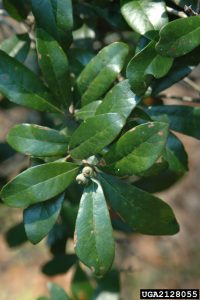
Live oak with immature acorns. Photo credit: Wendy VanDyke Evans, Bugwood.org.
Do you have more acorns than you know what to do with? When oaks produce loads of acorns, it sometimes is called a “mast” year. Do you remember the oak tree pollen and all those catkins that fell from oaks earlier in spring?
Catkins are the male flowers in oaks. Some people refer to them as tassels or worms. The airborne pollen from these catkins were part of the reproductive process in fertilizing the female oak flowers that ultimately resulted in all of these acorns. Oaks produce separate male and female flowers on the same tree. Female flowers in oaks are very small. You’d have to look very close to see them. Many oaks did well in their reproductive efforts this spring. Acorns are oak seeds. This entire process is part of the cycle of life.
There are theories about mast years, wildlife’s use of these acorns and what gardeners can expect next year as a result of this year’s abundant acorn crop. Timing of mast years is still a mystery. Numerous theories exist ranging from weather to geography to the life cycles of predators.
The most likely reason for high production seems to be weather-related. When oak trees have favorable weather at the time of oak flowering and good growing conditions, the mast seems to be increased.
But mast years happen irregularly, making it difficult to understand what causes a mast year. Heavy acorn production can occur twice in a row or it might be separated by several years or more. There’s no good way to predict it.
Mast years are important to wildlife, as acorns are an important food for many animal species. In low crop years, birthrate for some wildlife species, such as squirrels, will decline the following year. This also may involve increased competition for food and survival rates. The recent crop means that more young are likely to be produced by animals that forage for acorns.
Wildlife play a big role in forest regeneration. When acorns drop out of oaks, many animals help distribute these seeds. Squirrels can bury hundreds of acorns. Some of these acorns germinate and grow to become the next generation of oak trees. Some will be eaten by birds, bears, deer, rodents, including squirrels, and other wildlife. Rodents are in turn eaten by carnivores and deer browsing shapes which kinds of plants become established and survive. All those acorns have far-reaching impact on wildlife and our forests.
So, try to keep this in mind as you are fussing with all those acorns in your lawn and landscape this season.

by Julie McConnell | Nov 22, 2016
 Missing rose buds, pulled up pansies, and damaged tree trunks are all signs that something has been visiting your garden while you are away. But what could it be? Most gardeners are familiar with leaf spots caused by fungal diseases or minor feeding damage by insects, but to see half a shrub or an entire flower bed demolished overnight indicates a different type of pest.
Missing rose buds, pulled up pansies, and damaged tree trunks are all signs that something has been visiting your garden while you are away. But what could it be? Most gardeners are familiar with leaf spots caused by fungal diseases or minor feeding damage by insects, but to see half a shrub or an entire flower bed demolished overnight indicates a different type of pest.
There are several mammals that visit home landscapes and may cause damage, especially in times of drought when natural food sources are limited. Because we provide water for our landscapes, our plants tend to have lush new growth at times when plants in natural areas have slowed growth because of a lack of water or other stressors that managed gardens do not face. So, it’s no surprise that herbivores will be attracted to our landscape for a midnight snack.
It is important to determine what is causing damage so that you can employ protective tactics if possible. Some things to look for to try to figure out who the culprit is are footprints, dropping, feeding clues (bite marks, scrapes, etc.), or other distinctive damage. For more details about how to tell the difference between damage caused by multiple pests see How To Identify the Wildlife Species Responsible for Damage in Your Yard.
Once you have determined what is causing the damage you can try some different strategies to deter future feeding. Some plants may be impossible to protect, but before you spend your money and time check out these recommendations by wildlife specialists at the University of Florida in How to Use Deterrents to Stop Damage Caused by Nuisance Wildlife in Your Yard
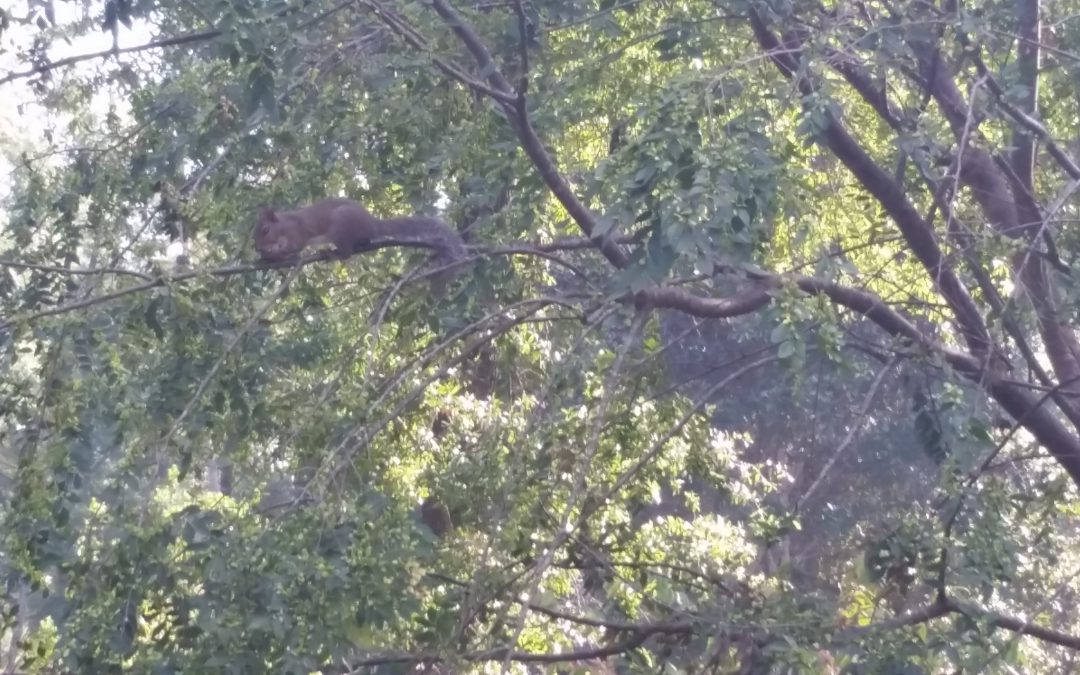
by Matt Lollar | Nov 7, 2016
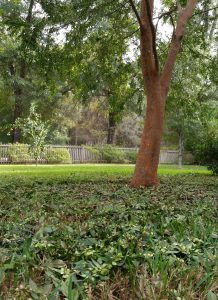
Chinese elm tree leaves fall due to feeding squirrels. Photo Credit: University of Florida/IFAS Extension
The Chinese elms in my yard are under attack. They are dropping leaves and the temperature’s still in the 70s. Upon closer look, they aren’t just dropping leaves but the tips of branches too. What is going on? Is there a new insect pest wreaking havoc on my trees? Did I do something wrong? No, no, and…no. The culprits are tree rats! You know, those bushy-tailed rodents that live in the trees (also known as squirrels).
Squirrels feed on a number of things in my yard including mushrooms, acorns, and now I’ll have to add elm branches to the list. Chewing on branches doesn’t sound appetizing to me but, as with everything, there is a reason for it. The best explanation is that the varmints can sense an accumulation of sugars in the trees and they are feeding on the cambium layer underneath the bark.
Another explanation is that there are no other preferred food sources available. However, I can debunk that theory because the squirrels have not even touched my ripe satsumas. And we all know that satsumas taste a lot better than tree branches.
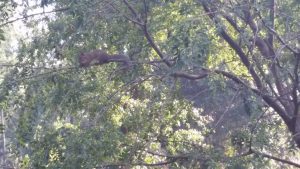
A hungry squirrel feeds on Chinese elm wood. Photo Credit: University of Florida/IFAS Extension.
Whatever the reason, the feeding may actually do a bit of good for the trees. The squirrels mainly feed on the new tree growth. This helps to promote new branching, growth which will potentially contribute to better shading from the tree. However, there is a tried-and-true solution to the problem if the squirrels annoy you as much as they annoy me. I prefer to brine squirrel in a mixture of water, salt, and sugar before I put them on the grill but you can prepare them in any way you’d like.
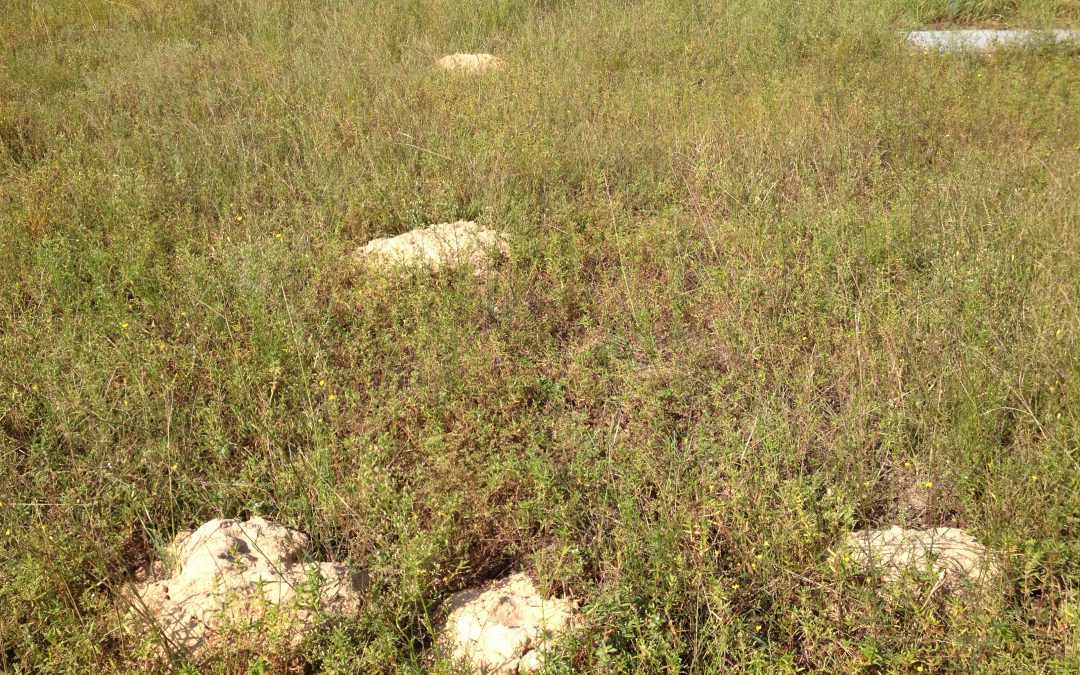
by Larry Williams | Sep 23, 2016

Mounds of sand made my pocket gopher along roadside. Photo Credit: Larry Williams
Pocket gopher is a furry animal known by many locals as “sandy mounder.” It was given this name because of the sandy mounds of excavated earth that the gopher pushes out of its underground burrows. The name sandy mounder, with time, became “salamander.” This animal is not a salamander at all. Salamanders are slimy amphibians shaped like lizards. Salamanders are often known as “spring lizards” in Florida.
To make this nomenclature problem more confusing, in some areas of Florida gopher means a certain burrowing tortoise – the gopher tortoise.
To simplify things keep in mind that in Florida “spring lizard” can mean “salamander” and “salamander” can mean “gopher” and “gopher” can mean “turtle.”
“Gopher” is a confusing word all over the country. Jeff Jackson, retired wildlife biologist with University of Georgia Extension says, “The Richardson’s ground squirrel of the west is called gopher. So is the thirteen lined ground squirrel of the Great Plains and Midwest. Moles are called gophers in many areas. And voles (certain short-tailed mice) are called gophers in some states.”
Jackson says there are six species of “sure enough, genuine pocket gophers in the United States.” Our pocket gopher is the Southeastern Pocket Gopher, found in north Florida, south Alabama and south Georgia.
The pocket gopher spends its time underground making tunnels and nests, eating roots and bearing and raising young. It may venture into residential areas where it can damage plants by feeding on tree and shrub roots or bulbs and tubers of various plants.
A pocket gopher can make fifty or more sandy mounds in a relatively short period of time. These mounds, which are normally four to six inches high and possibly a foot across, are what get homeowners’ attention. The mounds can “popup” overnight in lines or rows. They resemble fire ant mounds; however, they contain no ants.
The pocket gopher is a rodent that grows to about a foot long, has a short tail and weighs about half a pound. Its name comes from the large fur-lined pouches on the outside of its cheeks.
Even though they do contribute to the formation of soil and provide a food source for some predators, sometimes their damage may justify control measures.
Trapping is the most effective option. No chemical repellents are known to be effective. It’s illegal to use any poison to kill gophers. Vibrating devices have not been proven to repel gophers. A long held belief that Wrigley’s Juicy Fruit gum kills gophers by blocking their digestive system has been proven to be false.
A detailed fact sheet is available online at http://edis.ifas.ufl.edu/uw285.
by Julie McConnell | Sep 16, 2016
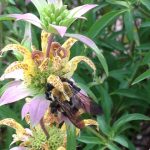
Bee visiting Monarda punctata. Photo: J. McConnell, UF/IFAS
If you are looking for a late summer blooming plant that attracts pollinators and survives in a tough spot, dotted horsemint (Monarda punctata) is for you! This native plant thrives in sunny, well-drained sites but will also tolerate moist garden spots. It grows quickly and blooms prolifically – attracting pollinators by the dozens. A plant covered in blooms is very showy and when you go in for a closer look, you’ll see unique flowers.
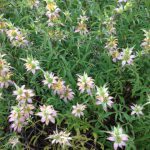
Dotted horsemint brings color to the summer garden. Photo: J. McConnell, UF/IFAS
This plant can get 3 feet tall by 4 feet wide but it is tolerant of pruning in the growing season to keep it tidy and encourage bushiness. Just be sure to prune it before it sets flowers, a good rule of thumb is to prune before the end of June.
Propagation is by division or seed. Few pests affect dotted horsemint.
To read more about this flowering perennial:
Monarda punctata Bee Balm, Horsemint
by Carrie Stevenson | Jun 1, 2016
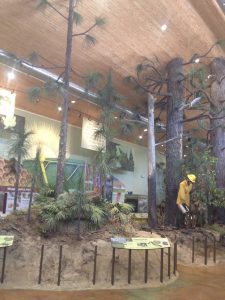
The longleaf forest display at the E.O. Wilson Biophilia Center shows typical vegetation and wildlife in the forest. Photo credit: UF IFAS Extension
Pine trees are so common in the southeastern United States that they are often taken for granted. They are usually the first to be cut down when homeowners are nervous about storms, and unless you’re in the tree-growing business, they are not considered all that valuable. However, the history and development of northwest Florida is intrinsically tied to the stately pine. During the 19th and early 20th centuries, the “naval stores” industry employed thousands of people collecting resin from pine trees. This industry produced turpentine and rosin used most famously to waterproof wooden ships, but also for soap, paint, inks, varnish, and medications.
Our area is home to seven native species, and each fulfills a specific role in the environment. In fact, during Florida Master Naturalist Program classes, we teach about pines living in all three of the broad Florida habitat types—uplands, freshwater wetlands, and coastal areas. These species can be difficult to tell apart, but a few tricks can help keep them straight.
The best way to keep track of pines is to recall that species starting with “S” (sand, shortleaf, spruce) have needles in bunches of twos (the letter S has two endpoints), and pines starting with “L” (a letter with 3 endpoints) have bunches of three (loblolly, longleaf). Finally, slash pine, starting with “SL” has bundles of 2-3 needles. Pond pine is an anomaly in that its shorter needles are in bunches of 3-5 needles.
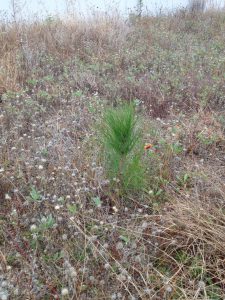
Longleaf pine sapling Photo credit: UF IFAS Extension
A few interesting facts on some of our native pine species:
- The Southeast was once covered in over 60 million acres of longleaf pine forests, the namesake of an ecological habitat that encompasses many valuable and endangered species, including bobwhite quail, red-cockaded woodpeckers, gopher tortoises, and indigo snakes. Wind resistant and adapted to frequent fires, the trees can grow 80-100 feet tall. One of the largest stands of longleaf pine in Florida is at Eglin Air Force Base.
- Pond pine often grows along the edges of wetlands and ponds. Its cones may stay closed on the tree for up to eight years, but if a fire comes through they will immediately open and release their seeds. This adaptation allows the species to take advantage of open soil in full sun after a fire to germinate new trees.
- Sand pine can grow in extremely sandy, low-nutrient soils, including beach dunes on the Gulf and Atlantic coasts. They have very short needles (2-3 inches long), and the “Choctawhatchee” variety of sand pine works well as a Christmas tree.
For detailed information on identifying all seven species along with several introduced pines, please see the new UF publication, “Common Pines of Florida.”











